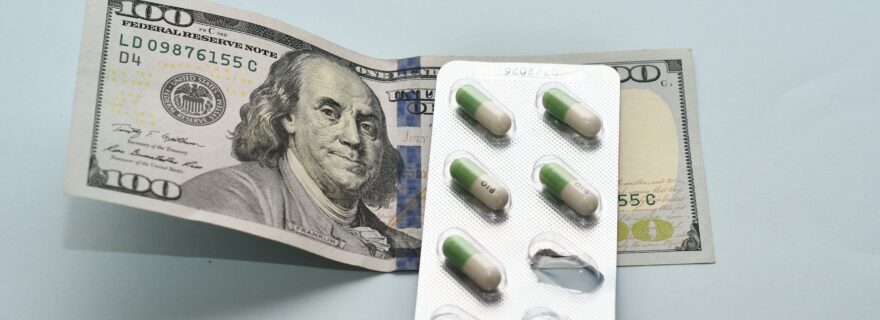An example of unproductive entrepreneurship in the pharmaceutical sector
The US patent system offers a high payoff to a pharmaceutical firm using the partly public-funded research findings of others. A fair outcome of the competitive market and the patent system?
Should we tolerate high benefits for pharmaceutical firms that capture publicly funded research findings?
A group of Dutch-Australian cardiologists tested the use of a very old medicine to treat gout as an alternative treatment for preventing heart attacks. This longitudinal study was funded by public and private organisations. The cardiologists discovered that this medicine works better and is more cost effective than the present alternative treatment. Their findings were published, but the last step to transforming them into a regulated method to prescribe the new medicine in the strict healthcare system was blocked, and delayed. This frustrated the process of acquiring a patent.
A multinational pharmaceutical company, Agepha Pharma, captured the findings and managed to pass the requirements of the Food and Drug Administration (FDA) for the American market. “We are simply too late”, a researcher remarked. Agepha Pharma acquired a patent for the American market on an old and well-known (generic) medicine (Colchicine), after using research from the Dutch-Australian group of cardiologists. They renamed it Lodoco, a name already invented by the research group, and slightly changed the doses from 0.6 to 0.5 milligram. With the patent, they can capture the benefits (profits) because the right is exclusive. However, they had barely created the value since the main investments had been financed by others.
Mazzucato has published two books about value creation. In short, her two main points are: (1) the role of the state (the public sector) in the innovation economy is undervalued; and (2) economic prosperity is undermined by rewarding value takers, and not value makers. The latter problem comes from the way we perceive value – the value concept is based on the value captured, rather than value created. These two aspects are clearly present in the case outlined above. Is this fair? Should we tolerate this way of rewarding? Is it time to change these high payoffs from such (‘entrepreneurial’) strategies?
So how to assess this action?
Is this an example of good entrepreneurship, i.e. discovering or creating (and seizing) opportunities? Free riding – making use of the efforts of competitors – is, indeed, part of the competitive economy which is constantly in search of new combinations/opportunities. Or is it bad entrepreneurship using public efforts and blockades? Is this an example of how the patent system can be misused?The patent system is a mechanism to stimulate research & development expenditures. If a firm cannot capture the value of an idea or finding, it will not invest in it. A patent is an incentive to invest and reap the benefits and to cover the initial outlay; successful efforts are rewarded. In this way, the costs and benefits of research are internalised. Agepha Pharma, however, managed to externalise the costs, and only internalised the benefits.Agepha Pharma’s trick is a ‘perfect’ example of rent seeking: i.e. not increasing public welfare, only seizing value created by others. According to Mazzucato, the false assumption in assessing these strategies is that value captured (realising profits and thus increasing shareholder value) is equivalent to value created – contributing to aggregate welfare.
The difficulty in detecting unproductive entrepreneurship
Value creation from innovation has three main characteristics: it is a cumulative effort, it is a collective effort, and the outcomes are uncertain (e.g. represented by the value chain, value net, or co-creation). Thus, the question is what is created, with whom, and for whom? All three questions are unknown. Value captured (profit making, shareholder value creation) is not always a sign of value created – adding to prosperity. However, equalising them is not an easy task; the problem is that only value captured is known, at least made visible (e.g. as profit in the annual accounts). Thus, it is not easy to detect and counter unproductive (rent seeking) or even destructive entrepreneurship (because it can create disincentives to invest in new medicines if others can easily reap the benefits). Governments can interfere, but they have to value actions and outcomes themselves. Besides, governmental actions are usually countered by proponents of the free competitive market – not only markets, but also governments (and patent systems) fail.
The final judgement
The final judgement of this strategic manoeuvre depends on whether the price of the new medicine is based on a method of ‘value-based pricing’ – i.e. it captures the not created value. Agepha Pharma is a family owned company, so perhaps there is less pressure from the capital markets to focus on shareholder value. However, its website is not very informative and transparent; financial reports – showing profits – are not included. The website does contain slogans like: ‘We are dedicated to making medicines (…) more accessible to the patients who need them most’, and ‘patients are the heart of everything we do. We never lose sight of our goals to provide all patients with access to needed medications through self-funded endeavours.’
Let’s keep our fingers crossed about the consequences of a possible value-based pricing system which reaps the benefits of not self-created value. And let’s hope that the European Medicines Agency (EMA) rejects this way of (mis)using the patent system for the European market. The patent system should internalise benefits, as well as costs.
References
Baumol, W.J. (1990). Entrepreneurship: productive, unproductive and destructive, Journal of Political Economy, vol. 98 (5), pp. 893-921.
Mazzucato, M. (2013). The entrepreneurial state: debunking public vs private sector myths, London, Anthem Press.
Mazzucato, M. (2018). The value of everything, making and taking in the global economy, UK, Allen Lane.
Volkskrant, July 31 2023. Deze pil (goed voor hartpatiënten) is moedwillig gekaapt. (Ellen Visser).



0 Comments
Add a comment